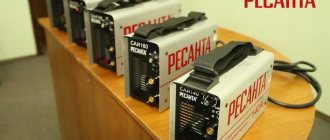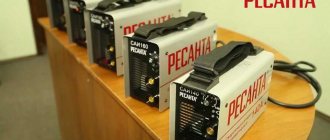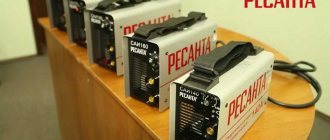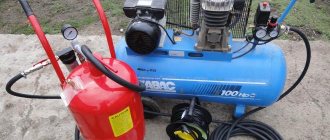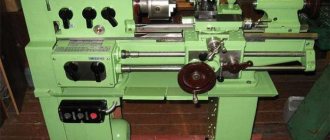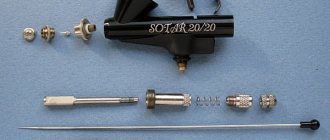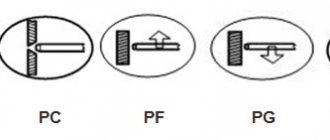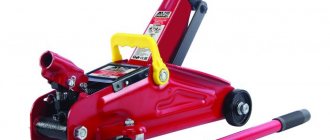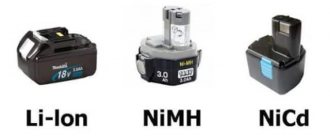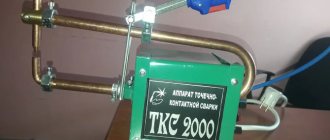Compressor units are widely used in households, in the technical equipment of small workshops and in production. Such equipment allows you to economically generate working force, in some cases relieving the user of the need to directly connect the equipment to the electrical network. But for high-quality service of the target tool, the optimal installation option should be initially determined. At the first stage of selection, the answer to the following question is given: which compressor is better - oil or oil-free? Both options are attractive in their own way, but with different performance qualities.
Design of oil compressors
To begin with, it should be noted that both types are included in the general group of piston compressors, which are also called coaxial. This technology is characterized by fairly high productivity, reliability and versatility of use. But already within the family there are differences between the subspecies, which represent oil and oil-free compressors, as well as belt modifications.
So, the oil unit consists of a crankshaft and a piston group, which exerts the necessary force in conjunction with the drive system. The lubricating fluid is just poured into the crankshaft crankcase, after which it is distributed among the elements of the mechanical equipment, ensuring the stability of its operation. Therefore, in terms of ease of maintenance, the question of which compressor is better - oil or oil-free - will be decided in favor of the second option. The lack of regular maintenance of lubrication levels is especially sensitive in large plants where preventive maintenance is performed after each work session.
Advantages and disadvantages of compressor units
Oil compressors
Oil compressors are a reliable and time-proven device that allows long-term and complex work of various types.
Advantages
- Economical energy consumption;
- High performance;
- Long working cycle;
- No overheating;
- Long service life.
Flaws
- The need to monitor the oil level;
- Considerable weight;
- High price.
Oil-free compressors
Advantages
- Clean air supply;
- Convenient operation (due to the absence of the need to use oil);
- Light weight;
- Low price.
Flaws
- Low productivity;
- Short service life;
- Weak power.
Design features of oil-free models
In general, the technical and structural basis of such compressors is similar to their oil-based counterparts. The basis is the same piston group, power unit, crankshaft, etc. The difference comes down precisely to the approaches to organizing the cleaning system. In the case of oil equipment, air flows intersect with lubricant supply channels. Conversely, the design and advantages of an oil-free compressor are interrelated and are due to the fact that the lubricating fluid and air flow pass through different channels. Oil is not poured into the crankcase, but is sent to a special cleaning system. Therefore, it cannot be said that oil-free coaxial models are completely devoid of lubrication. It is only limited to the design nuances of the feed, which has both pros and cons.
Differences
The main difference between an oil compressor and an oil-free one is the presence of a lubricant composition. When the unit starts working, the metal parts create friction. Since they are located close to each other, the elements are erased. The piston and crankshaft become very hot.
To avoid this, add oil.
It turns into a thin film and protects the device from:
- friction, the level of wear of parts is reduced;
- the appearance of corrosion;
- overheating, as heat dissipation properties improve;
- quick marriage. The service life of parts is increased.
Lubrication provides oil units with a long service life. They are able to endure non-stop work. During operation, it is important to use only the oil that is specified in the technical data sheet of the equipment. It is not recommended to use motor and transmission oils. Manufacturers often note the type of synthetic oil that can be poured into the compressor.
The lack of lubrication is how an oil-free compressor differs from an oil-based one. Movement and friction of parts occurs in dry mode. This leads to an increase in temperature. Model manufacturers try to minimize overheating in such equipment in several ways:
- use of a water injection system;
- in piston engines - the use of materials with a low friction coefficient.
Despite the efforts of manufacturers, friction is always present. Therefore, oil-free compressors do not last long.
Advantages of oil compressors
The main advantage of units with full oil supply is the long service life of the element base. Thanks to effective lubrication, parts of the same piston group receive a sufficient wear-resistant shell, which increases their durability. At the same time, the user can count on high performance. The massive structure can be used in factories and engineering production. However, under such conditions, almost any coaxial unit can operate - oil or oil-free. Which compressor is better in terms of continuous operation? With such a requirement, it is advisable to give preference to oil-based devices, since they are initially designed for long working sessions.
Compressor selection criteria
Design features
. Oil-free compressors differ from each other in their design.
- Spiral models are a simple device where two spirals play the main role. One of them is in a static position, and the other is constantly rotating. This is how air is pumped.
- The screw compressor consists of two chambers. In one of them, air is sucked from the atmosphere. In another chamber, two screws rotate towards each other, pumping air.
- The piston device resembles the operation of an internal combustion engine. Only the piston is driven by torque, which is transmitted through the crankshaft from the electric motor.
Power and performance.
The key characteristics of an oil-free compressor are the power of the electric motor and the performance of the unit.
- For working with airbrushes or cleaning computer equipment, small models with a power of 0.3-1 kW are suitable, producing up to 180 liters of compressed air per minute.
- If you need to work with pneumatic tools or carry out painting work, then it is preferable to take a more powerful (1.1-1.5 kW) and productive (200-250 l/min) unit.
Receiver.
Depending on the type of work performed, the size of the receiver is selected. The smaller the volume of the tank, the faster the compressed air leaves and the more often the compressor has to turn on. But a large receiver makes the device heavy and bulky, which is inconvenient for transportation or home use. Therefore, for low compressed air consumption, compressors with a receiver of up to 10 liters are suitable, but for large-scale work it is better to take a model with a 20-50 liter reservoir.
Ease of movement.
When the compressor often has to be moved from place to place or transported, the user pays attention to such points as weight and overall dimensions
- Light models (up to 20 kg) are usually equipped with legs and a carrying handle.
- Heavier compressors come with wheels, making them easy to move around the workshop or garage.
Equipment
. The compressors also differ in the richness of their equipment.
- Beginning craftsmen should take a closer look at the devices that come with an air hose, a paint sprayer, blowing and inflating guns, and all kinds of attachments.
- Professionals already have the necessary set of additional accessories. Therefore, it is preferable for them to purchase only the compressor itself.
We have selected the 7 best oil-free air compressors for review. It is not difficult to purchase them in Russian stores. When allocating places, the editors of the expertology magazine took as a basis the conclusions of experts, not forgetting the reviews of domestic consumers.
Advantages of oil-free equipment
Both the combination of the air channel with the lubricant supply circuit and the separation of these lines is not a side design consequence, but a completely conscious technical decision. It is what separates oil and oil-free compressors, as well as their performance characteristics. And if the first option receives advantages in the form of increasing the working life of the structure and increasing productivity, then oil-free units are distinguished by the quality of their work.
A separate supply of lubricating fluid makes it possible to supply clean compressed air at the outlet. Therefore, the question of which compressor is better - oil or oil-free, from the point of view of the quality of work of the serviced tool, will be decided in favor of the second option.
Installation of oil and air filters
If the application requires clean, oil-free air, but oil-free compressors do not meet the requirements for performance and continuous operation time, a solution exists. This is an oil air filter. It is installed at the outlet of the compressor and, passing all the air in the line through itself, retains the suspension contained in it on its plates.
Structurally, it is made in the form of a flask with two pipes, included in the break in the air line. There is a filter element inside the flask; it should be replaced regularly. A valve may be provided at the bottom of the flask to drain retained oil.
The filter has a number of disadvantages:
- reduces productivity and working pressure;
- requires periodic replacement of the filter element and draining of the oil;
- does not guarantee 100% air purification.
Therefore, where absolute cleanliness of the working environment is required, the assembly (oil compressor + air filter) is not used.
Comparison of performance properties of two compressors
It is impossible to say which option will be optimal in each case. It has already been said that for large industries, where the quality of the supplied air is not of great importance, it is advisable to use oil-based equipment. Such a device will be able to meet high requirements for load, wear resistance and stability of the working function. Comparing oil and oil-free compressors in the context of domestic use looks completely different. In this area, compressors are often used to service spray guns, pneumatic screwdrivers and other devices that operate on compressed air. And regardless of the purpose, such a tool will be demanding on the quality of the air stream. Accordingly, lubricant admixtures from an oil compressor are not needed here, and the choice should be made in favor of an oil-free unit.
Features and principle of operation of the unit
The first prototypes of a compressor based on a piston were created a couple of centuries ago, and until the beginning of the 20th century, such devices were the only ones used in metallurgy to supply air compressed under pressure. The working part of a piston compressor is a cylinder with two valves in its walls - discharge and suction.
When pressure drops between the compressor cylinder and its chambers, the valves automatically open. The movement of the piston begins, capturing air, which is pumped until the required gas pressure entering the receiver (storage tank) is reached.
The design of the device provides for a pipeline with filters. If we are talking about a unit of significant performance, its cylinders are equipped with water cooling. For low-power devices, air cooling is sufficient.
Regardless of the performance and drive of a piston compressor, the main principle of its operation is gas compression in the cylinder. To achieve the desired effect, a significant portion of the power is used to reduce friction from the piston and cylinder. To reduce the negative effect, the piston moves in such a way that there is no contact with the cylinder walls, and the gap is filled with sealing rings.
What else to consider when choosing?
Belonging to one or another type of compressor determines only the direction of the operational potential. In one case - in the direction of reliability and productivity, and in the other - it speaks of the quality of the work function. But you should also take a detailed approach to choosing a model based on its main characteristics. What should be the right choice? Oil and oil-free compressors, their features, as well as their functionality, are determined by the pressure level, air flow and receiver volume. The pressure is usually between 6 and 10 bar for workshop or small production applications. The optimal air flow for similar needs should be 200-400 l/min. For everyday tasks, when working with a spray gun, you can limit yourself to a compressor with a capacity of 75-100 l/min. As for the receiver volume, private households usually use models with a 20-30 liter tank. Professional equipment for the same long-term work can also have 500-liter containers.
Specifications
- Power.
- Performance.
Also important are the volume of the receiver, weight, dimensions and voltage in the network from which the compressor will operate.
Pressure
Pressure is measured in atmospheres (Atm) or in Bars (Bar). Operating pressure refers to the pressure at which the compressor operates at maximum efficiency. Maximum pressure is the maximum permissible value for compressor operation. This parameter is necessary, for example, to select a suitable tool.
High-quality and expensive compressors are usually highly durable and can withstand very long operating periods; conversely, budget devices are usually not designed for long-term outings and quickly break down.
In this case, the air pressure can constantly change throughout the entire operating cycle. For example, for a compressor, max. the pressure of which is 9 bar, slave. the pressure will jump from 5 to 9 Bar. The main thing is that the pressure cannot be less than that of the tool connected to the compressor, otherwise the work will stop prematurely. This point must be taken into account in advance when choosing a tool model.
Performance
Usually measured in m³/min, l/min, m³/h. Indicates the amount of compressed air that the compressor is capable of transferring in a specific unit of time. The value indicates the performance during suction into the compressor. This value is not constant and changes depending on the air temperature and other variables; Therefore, it is recommended to select a compressor with a double reserve of pressure and capacity.
Power
It is measured in kilowatts (kW) and shows how much work the engine can perform per unit of time. Thus, the higher the power rating, the less time the engine needs to complete the task.
At the same time, in practice, the indicators of real and calculated power differ from each other, because calculated indicators will always be less than real ones.
Expert opinion Dmitry Konstantinovich Levin
If pressure, productivity and power are the main indicators on which the optimal final result depends, then all the others, such as receiver volume, weight, dimensions, are secondary indicators that depend on the main parameters.
Receiver volume
A receiver is a special tank made of metal and designed to store compressed gas. The higher the receiver capacity (the parameter itself is measured in liters), the less likely it is that the compressor will suddenly turn off when the compressed air level drops to a minimum. However, the device will need more time to fill the receiver.
You can choose a capacity from 5 to 500 l
But it is important to understand: if the tank capacity is small, then the compressed air will quickly rise to the maximum level and also quickly fall to the minimum. As a result of such fluctuations, unexpected switching on and off of the device will become a regular occurrence.
Compressor dimensions
When choosing a compressor for a room, the size and mobility of the unit (mm, LxWxH) play an important role. Modern compressors are also equipped with comfortable handles, wheels and long, sometimes retractable side handles, which greatly facilitates the process of moving the unit, regardless of its size.
Weight
The compressor market is usually divided into weight categories. Lightweight devices, weighing about 4 kilograms, are inexpensive and are intended for home construction and fastening work. Models weighing over 25 kilograms from the professional and semi-professional segment are already much more expensive.
Reviews of compressor manufacturers
Foreign compressors are widely represented in Russia by the brands Abac, Elitech, Daewoo, Hyundai and FUBAG. These are semi-professional and professional units, whose users note high build quality and durability. In the construction segment, products from Hitachi, Metabo and Sturm are especially valued. You can contact these manufacturers regardless of the type of unit you plan to buy - be it oil-based or oil-free. Which compressor is better to choose among the families of domestic companies? Russian ones, Interskol, Prorab and Kalibr, also have the same approach to the production of both types of compressors. However, owners of such products note an unpleasant nuance. Unlike imported equipment, domestic oil compressors suffer from the lack of high-quality filtration units for preparing lubricant mixtures.
How to change the oil in an air compressor
It is quite difficult to calculate the engine hours worked by the unit. But it is still recommended, at least approximately, to keep a record of them, since timely replacement of the oil in the device significantly extends its service life. On average, for a new device, the first oil change should be no later than 50 operating hours. The next maintenance of the compressor to replace the lubricant is already carried out after the number of operating hours specified in the instructions for the compressor. In each case, depending on the device model, this indicator will differ.
It is better to use branded air compressor oil designed specifically for this equipment. If branded oil is difficult to find, then you can replace it with any compressor oil of the required viscosity.
So, changing the oil in an air compression apparatus occurs as follows.
- First of all, you need to disconnect the device from the power supply and completely bleed the air from the receiver. The needles on all pressure gauges should be at zero.
- Make a container from a plastic bottle into which the lubricant will be drained.
- Place a container under the grease drain hole and unscrew the plug nut that closes it. Normally, the grease should not be too light or dark. Light-colored grease indicates that moisture is getting into it. Too dark oil is the result of overheating of the unit.
- After the lubricant stops flowing out of the crankcase, tighten the nut back.
- Next, unscrew and remove the breather from the crankcase filler hole.
- Pour lubricant into the crankcase. It is more convenient to pour oil through a watering can to prevent it from spilling. Fill in enough lubricant to reach the control mark in the inspection window.
In the future, you should constantly monitor the oil level in the crankcase and, if necessary, top it up.
The best oil-free piston compressors
Hyundai HYC 1824S
Main characteristics:
- Working pressure – 8 bar
- Inlet capacity – 180 l/min
- Receiver volume – 24 l
- Engine power – 1 kW
- RPM – 1400 rpm
Power point. This model has two cylinders connected by direct drive to a 1 kW electric motor with a rotation speed of 1400 rpm. To reduce vibration, the power unit is attached to the receiver using thick rubber gaskets. The intake air is cleaned by a filter.
Automation block. The control unit gives commands to start and stop the engine when the pressure limits in the system are reached. The regulator located at the output allows you to set optimal conditions for the operation of the connected instrument.
Hyundai HYC 1824S automation unit.
Receiver and wheels. The 24-liter air tank is mounted on two wheels and a pair of fixed supports, which ensures maximum stability in the working position. There is a drain valve at the bottom to remove condensate. Ease of movement is facilitated by a rubberized handle located at a convenient height for gripping.
Functionality and operation. The unit generates compressed air at a pressure of 8 bar with a capacity of 180 l/min. The hose from the tool is connected to a fitting with a quick connector.
Pros of Hyundai HYC 1824S
- Compact sizes.
- Good performance.
- Stable design.
- Low noise and vibration levels.
- Minimal maintenance.
Cons of Hyundai HYC 1824S
- The drain valve is located slightly to the side, which is convenient for the operator, but does not guarantee complete drainage of condensate.
PATRIOT WO 24-160
Main characteristics:
- Working pressure – 8 bar
- Inlet capacity – 160 l/min
- Receiver volume – 24 l
- Engine power – 1.1 kW
- RPM – 1380 rpm
Power point. The unit is equipped with two cylinders with Teflon piston seals, which reduces friction and heat. The 1.5 kW motor rotates at 1380 rpm. A mechanical filter is attached to the suction pipe, ensuring the purity of the supplied air and comfortable conditions for long-term operation of the equipment.
Powerplant PATRIOT WO 24-160.
Automation block. The safety system includes engine overheat protection, a safety valve and a pressure regulator. You can control the readings using two pressure gauges.
Automation unit PATRIOT WO 24-160.
Receiver and wheels. The 24-liter air tank has a drain valve, wheels for movement, a rubberized support and a soft-grip handle.
Functionality and operation. The device provides air supply at a flow rate of 160 l/min. Maximum pressure 8 bar. Connections use a ¼-inch quick-release connector.
Pros of PATRIOT WO 24-160
- Mobility.
- Compactness.
- Economical work.
- Reliable design.
- Clean air out.
- Low noise level.
- Detailed instructions.
Cons PATRIOT WO 24-160
- Low productivity limits the choice of tool used.
- There is vibration and displacement on a smooth floor.
Fubag Smart Air
Main characteristics:
- Working pressure – 8 bar
- Inlet capacity – 180 l/min
- Receiver volume – 2 l
- Engine power – 1.1 kW
- RPM – 3400 rpm
Power point. The compressor of this brand is equipped with a 1.1 kW electric motor with a piston group rigidly connected to it.
Automation block. The device is put into operation by pressing a single switch, after which the system quickly builds up the required pressure. Pressure gauges are located in the housing and at the end of the distribution hose, where there is a control relay.
Receiver and wheels. The model is a small plastic suitcase weighing 9 kg with a convenient carrying handle. It has a compartment for storing all the necessary accessories. The air capacity has a volume of only 2 liters, which facilitates rapid entry into operation, but leads to frequent alternation of periods of operation and cooling.
Functionality and operation. The set is designed for a flow rate of 180 l/min at a pressure of 8 bar. The kit includes a 3 meter long hose, a blow gun, a device for inflating tires, balls and mattresses with appropriate nozzles.
Fubag Smart Air equipment.
Pros of Fubag Smart Air
- Compactness.
- Ease.
- Good equipment.
- Long service life.
- Minimal maintenance.
Cons of Fubag Smart Air
- The device is not for long-term continuous operation.
- High noise level.
- Hard hose. It gets dull in the cold.
